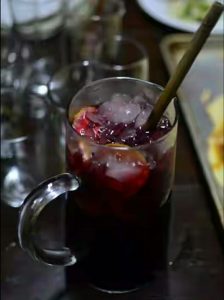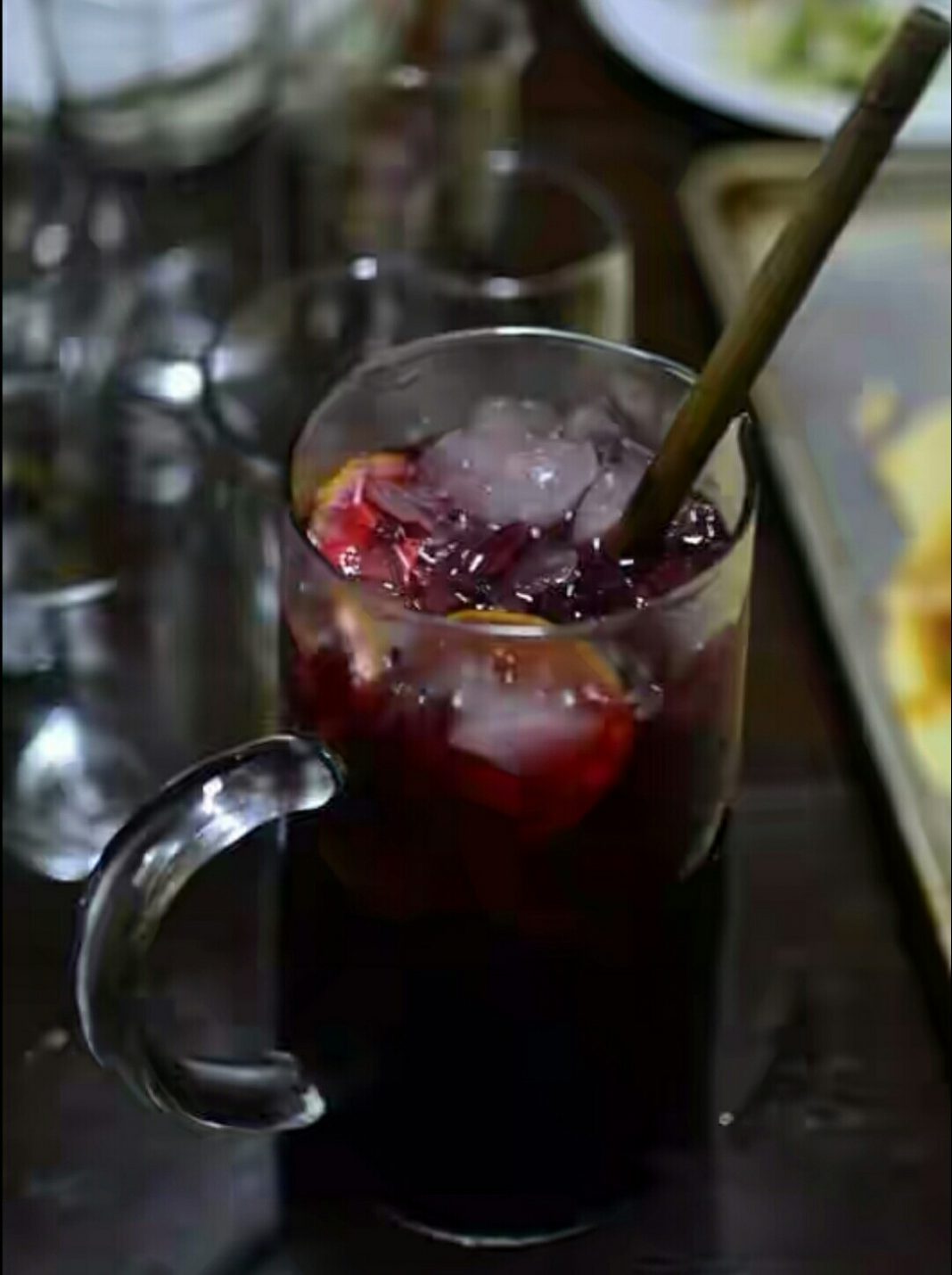Health benefits and side effects of zobo drink/sorrel drink…
Zobo drink is a tea made from hibiscus flowers is known by many names around the world and is served both hot and cold. The beverage is known for its red colour, tart flavour, and vitamin C content.
🌱 Etymology:
The word “hibiscus” translates almost perfectly to the Greek word “hibiscus,” which means mallow. Since the hibiscus plant is in the mallow family, this makes a lot of sense. The plant’s scientific name is Hibiscus rosa-sinensis but can be referred to as simply hibiscus.
Common names for Hibiscus include the mugunghwa (in South Korea), Rose of Sharon (especially in North America), Syrian ketmia, Shrub althea, Rose mallow (in the United Kingdom). It is the national flower of South Korea and is mentioned in the South Korean national anthem. It is also frequently called Tropical hibiscus, Hawaiian hibiscus, Shoeblackplant, China rose, and Chinese hibiscus.
Hibiscus is also the national flower of Haiti, and the flowers are also highly revered in Hawaii. They are the official state flower of Hawaii despite the fact that they are not native to Hawaii. Both yellow and red hibiscus flowers have been used as the state flower here.
🌱 Historical uses:
In Victorian times, giving someone a hibiscus flower usually meant that the giver was acknowledging the delicate beauty of the recipient. Hibiscus flowers are considered very feminine. Therefore, they are usually given to women. However, in China, hibiscuses symbolise the fleeting nature of fame and personal glory. Here, the flowers are given to men and women alike.
In North America, hibiscus flowers are used to symbolise the perfect woman or wife. Otherwise, the meaning of the flower varies depending on its colour and the culture in which it is given.
Based on records from the 19th and early 20th centuries, the hibiscus plant including its roots, leaves and flowers were believed to have medicinal properties and were used in traditional Malay healing in Malaya and in the Dutch Indies. For example, a decoction of the root was offered to provide relief from venereal disease, fever and sore eyes. Also, a decoction of the roots of the red and white flowered plants served as an antidote for poison. The juice of the white flower was given to those suffering from seriawan, an ailment symptomatically similar to thrush, sprue or diphtheria. An infusion of the flowers was used as an expectorant for bronchitis. Its leaves were applied to boils and sores and as poultices to provide relief from headaches and swellings. The white-coloured flower buds were ingested to treat hypertension.
The juice of the hibiscus petals and flowers was used as a dye by the Chinese and Indians to darken eyebrows and hair. This use of the hibiscus was passed on to the Arabs and Portuguese. Malays used the flowers in exorcism for epidemics and diseases. In Malaya and Indonesia, the flower petals were used to produce a black dye for shoe polishing, hence hibiscus is also known as shoe black flower. Hibiscus flowers are worn by women in the Pacific islands to reflect their single status.
Egyptians used hibiscus tea to lower body temperature, treat heart and nerve diseases, and as a diuretic to increase urine production.
In Africa, zobo drink tea was used to treat constipation, cancer, liver disease, and cold symptoms. Pulp made from the leaves was applied to the skin to heal wounds.
🌱 Medicinal uses And Health Benefits of Zobo Drink:
Hibiscus plants are known for their large, colorful flowers. These blossoms can make a decorative addition to a home or garden, but they also have medicinal uses. The flowers and leaves can be made into teas and liquid extracts that can help treat a variety of conditions.
Hibiscus drink has been used by different cultures as a remedy for several conditions. Egyptians used hibiscus tea to lower body temperature, treat heart and nerve diseases, and as a diuretic to increase urine production.

In Africa, tea was used to treat constipation, cancer, liver disease, and cold symptoms. Pulp made from the leaves was applied to the skin to heal wounds.
In Iran, drinking sour tea is still a common treatment for high blood pressure.
Worldwide, hibiscus is popular for its potential to reduce high blood pressure. Modern studies show promise for both the tea and hibiscus plant extract to lower blood pressure and cholesterol levels. Although more research is still needed, this could be good news for the future of heart disease treatment.
Hibiscus shows potential for cancer treatment and as a weight loss aid, along with other uses. There aren’t many studies in these areas, but some research suggests that anthocyanins may hold the key to hibiscus’ anticancer properties.
Another recent study found that hibiscus extract might have an effect on metabolism, preventing obesity and fat buildup in the liver. The tropical plant has even been used successfully as part of an herbal extract mixture to treat head lice.
🌱 Modern Day uses and health benefits of zobo drink:
It has a tart flavor similar to that of cranberries and can be enjoyed both hot and cold.
Hibiscus tea is rich in powerful antioxidants and may therefore help prevent damage and disease caused by the buildup of free radicals.
Interestingly, studies have shown that hibiscus may promote liver health and help keep it working efficiently.
In addition to lowering blood pressure, some studies have found that hibiscus tea may help lower blood fat levels, which are another risk factor for heart disease.
Several studies suggest that hibiscus tea may be associated with weight loss and protect against obesity.
In addition to having antioxidant and anticancer properties, some test-tube studies have found that hibiscus could help fight bacterial infections.
Hibiscus tea contains vitamin C — a nutrient that plays many essential roles in the body.
‼ Contraindications:
Hibiscus tea is very tart and might be more so to sensitive tissues. Listen to your body and if it makes you feel ill, discontinue use. Some research also suggests that hibiscus may affect the way the body processes acetaminophen (Tylenol), but this effect is likely very minimal.
While hibiscus tea may be a safe and natural way to help lower blood pressure, it is not recommended for those taking hydrochlorothiazide, a type of diuretic used to treat high blood pressure, as it may interact with the drug.
Hibiscus tea may interact with certain medications. It can decrease the effectiveness of the malaria drug chloroquine. If you take medications for high blood pressure or diabetes, it can cause a significant drop in blood pressure. The plant also contains phytoestrogens (or plant estrogens) that may decrease the effectiveness of birth control medication.
The phytoestrogens in hibiscus tea may cause complications during pregnancy. For instance, they may trigger preterm labour. If you are pregnant or breastfeeding, you may want to avoid hibiscus tea or look for an alternative.
Side effects of zobo drink
diarrhoea
Abdominal cramps
Vomiting
Allergies
🌱 How to make Hibiscus Tea:
Simply add dried hibiscus flowers to a teapot and pour boiling water over them. Let it steep for five minutes, then strain, sweeten it if desired and enjoy.
Hibiscus tea can be enjoyed both hot and cold, and most people sweeten it using honey or a honey alternative such as agave syrup or carob syrup.
This article on health benefits and side effects of zobo drink was culled from Fata Morgana





















